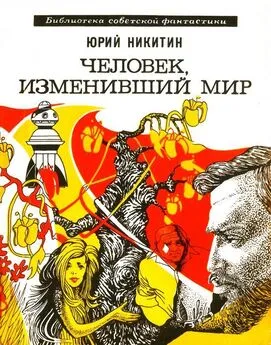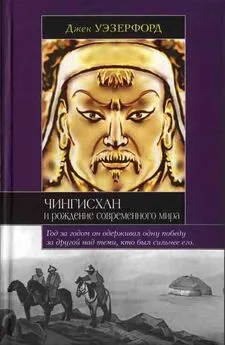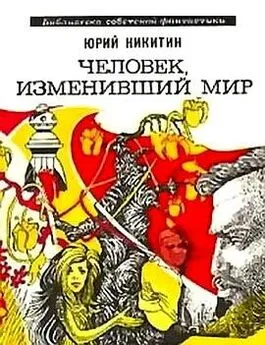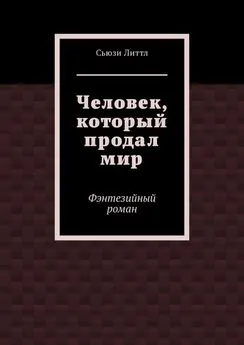Фрэнк Маклинн - Чингисхан. Человек, завоевавший мир
- Название:Чингисхан. Человек, завоевавший мир
- Автор:
- Жанр:
- Издательство:АСТ
- Год:2019
- Город:Москва
- ISBN:978-5-17-095186-4
- Рейтинг:
- Избранное:Добавить в избранное
-
Отзывы:
-
Ваша оценка:
Фрэнк Маклинн - Чингисхан. Человек, завоевавший мир краткое содержание
Чингисхан. Человек, завоевавший мир - читать онлайн бесплатно ознакомительный отрывок
Интервал:
Закладка:
244
RT I pp. 107–108.
245
Ratchnevsky, Genghis Khan p. 36.
246
SHO pp. 85–87; SHR рр. 35–36.
247
SHO pp. 87–90; SHR pp. 37–39; Rachewiltz, Commentary p. 417.
248
Rachewiltz, Commentary p. 435.
249
SHC pp. 52–53; SHO pp. 95–96; SHR pp. 44–45; SHW p. 262.
250
V V Bartold, 'Chingis-Khan,' in Encyclopaedia of Islam (1st ed., repr. 1968 v pp. 615–628 (at p. 617)); Vladimirtsov, Le regime social pp. 107–108; Vladimirtsov, Genghis Khan p. 130.
251
Grousset, Conqueror of the World p. 67.
252
SHO pp. 96–97; SHR pp. 44–46.
253
Vladimirtsov, Le regime social pp. 105–107.
254
As Rachewiltz sagely remarks, 'If neither Temujin nor his wife could understand Jamuga's poetic riddle, what hope have we, who are so far removed from that culture, to understand what was the real meaning of those words?' (Rachewiltz, Commentary p. 442).
255
Owen Lattimore, 'Chingis Khan and the Mongol Conquests,' Scientific American 209 (1963) pp. 55–68 (at p. 62); Lattimore, 'Honor and Loyalty: the case of Temujin and Jamukha,' in Clark & Draghi, Aspects pp. 127–138 (at p. 133).
256
Grousset, Empire pp. 201–202; Gumilev, Imaginary Kingdom pp. 143–145.
257
The numbers mentioned in the Secret History are unreliable for a number of reasons: 1) the author embellished with poetic licence and routinely inflated the size of armies; 2) the author anachronistically projected back into the twelfth century names, titles, technologies and modalities that belonged to an era fifty years in the future; 3) numbers in Mongol histories have a mystical or symbolic significance and therefore cannot be taken seriously for historical research. See Larry Moses, 'Legends by Numbers: the symbolism of numbers in the Secret History of the Mongols,' Asian Folklore Studies 55 (1996) pp. 73–97 and Moses, 'Triplicated Triplets: the Number Nine in the Secret History of the Mongols,' Asian Folklore Studies 45 (1986) pp. 287–294.
258
For exhaustive detail on the Thirteen see Pelliot & Hambis, Campagnes pp. 35–37, 53–135. See also Louis Ligeti, 'Une ancienne interpolation dans I'Altan Tobci,' Acta Orientalia Academiae Scientiarum Hungaricae 26 (1972) pp. 1–10.
259
SHO p. 104; SHR p. 152; Buell, Dictionary p. 159.
260
SHO pp. 127–128, 150–154, 177; SHR pp. 74–75, 96–100, 123–124.
261
Дух команды, солидарности ( фр .).
262
Infra dignitatem ( лат .) — дурная слава; плохая репутация.
263
SHO p. 90; SHW p. 263.
264
Grousset, Empire; Vladimirtsov, Le regime social p. 101.
265
Тумен — наиболее крупная организационная тактическая единица монгольского войска XIII–XV век. — Прим. пер.
266
SHO pp. 99–100; SHR p. 48. When he conquered the Turned later, Temujin actually made good on this promise (SHO pp. 195–196; SHR p. 138).
267
SHO p. 78; SHR p. 30; Atwood, Encyclopedia p. 9; Pelliot & Hambis, Campagnes pp. 155, 164, 340–341.
268
Martin, Rise of Chingis Khan p. 66.
269
Grousset described the Uriangqai's skates as follows: 'Small, well-polished bones tied to their feet with which they speed so swiftly over the ice that they catch animals in the night' (Empire pp. 579, 582).
270
For Subedei's early life see Abel-Remusat, Nouveaux melanges II p. 97; Hildinger, Story of the Mongols p. 65; Gabriel, Subotai pp. 1–5.
271
SHO p. 76; SHR p. 28.
272
Vladimirtsov, Genghis Khan p. 33.
273
SHC p. 58.
274
Barfield, Perilous Frontier pp. 187–188.
275
SHO p. 106; SHR p. 53; SHW p. 266.
276
ibid.; Rachewiltz, Commentary pp. 475–476.
277
Pelliot & Hambis, Campagnes pp. 135–137.
278
Denis Sinor, 'The Legendary Origin of the Turks,' in Zygas & Voorheis, eds, Folklorica pp. 223–257 (at pp. 243–246).
279
Buell, Dictionary pp. 9–11.
280
Ratchnevsky, Genghis Khan pp. 49–50, 235.
281
It was not just Temujin who had to endure hostility from brothers and uncles.
282
Wittfogel & Feng, Liao p. 648.
283
Gabriel, Subotai p. 9.
284
SHO p. 103; SHR pp. 50–51.
285
Pelliot & Hambis, Campagnes pp. 196–207.
286
For the planning of the campaign see Pelliot, 'L'edition collective des oeuvres de Wang Konowei,' T'oung Pao 26 (1929) pp. 113–182 (at pp. 126–128). For the military aspects see Pelliot & Hambis, Campagnes pp. 192–200.
287
Pelliot & Hambis, Campagnes pp. 202–203.
288
Ratchnevsky, Genghis Khan p. 235 claims this location was at 43° N109° E.
289
SHO pp. 108–110; SHR pp. 57–58; Hambis, Genghis Khan pp. 47, 57; Pelliot & Hambis, Campagnes pp. 195–199.
290
Другое написание — Вангин-Чинсян. — Прим. пер .
291
Pelliot, Notes sur Marco Polo I pp. 291–295.
292
Ratchnevsky, Genghis Khan pp. 52–53.
293
Abel-Remusat, Melanges p. 90.
294
Ratchnevsky, Genghis Khan p. 56.
295
SHO pp. 113–114; SHR p. 61.
296
RT I pp. 163–164; SHO pp. 107–108, SHR p. 55.
297
SHW pp. 267–268.
298
Rachewiltz, Commentary pp. 511–512.
299
Ratchnevsky, Genghis Khan p. 43.
300
Gumilev, Imaginary Kingdom p. 138.
301
SHO pp. 110–111; SHR pp. 58–59; Ratchnevsky, Genghis Khan p. 54.
302
SHW p. 270; SHC pp. 64–65; Pelliot, Notes sur Marco Polo I p. 322; Pelliot & Hambis, Campagnes p. 223.
303
SHO p. 114; SHR pp. 61–62.
304
Grousset, Empire p. 204.
305
Ratchnevsky, Genghis Khan pp. 54–55.
306
Krause, Cingis Han p. 15; d'Ohsson, Histoire I pp. 53–54, 74.
307
Ratchnevsky, Genghis Khan p. 57.
308
Pelliot & Hambis, Campagnes p. 309.
309
Hambis, Genghis Khan pp. 61–62.
310
RT I pp. 177–178; SHO pp. 132–133; SHR pp. 80–81.
311
RT I p. 64; Barthold, Turkestan p. 362; Pelliot & Hambis, Campagnes рр. 333–334.
312
SHO p. 134; SHR p. 82.
313
RT I pp. 178–179; Krause, Cingis Han р. 17.
314
RT I рр. 179–180; SHC pp. 76–78; Mostaert, Sur quelques passages p. 69; d'Ohsson, Histoire I p. 60.
315
RT I pp. 165, 175, 180–181; SHO pp. 126–128; SHR рр. 73–75; SHC pp. 80–81.
316
RT I p. 182; SHC p. 68; Pelliot, Notes sur Marco Polo I pp. 225–226; Pelliot & Hambis, Campagnes pp. 248–249.
317
Gumilev, Imaginary Kingdom p. 150.
318
Ratchnevsky, Genghis Khan pp. 38–39.
319
RT I p. 182; SHO p. 115; SHR pp. 62–63. As Lattimore says about Sorqan Shira's similar circumspection: 'It required nerve and good timing to elude the obligations of collective responsibility imposd by the institution of the subordinate tribe' (Lattimore, 'Chingis Khan and the Mongol Conquests,' Scientific American 209 (1963) pp. 55–68 (at p. 60)).
320
SHC pp. 73–74; SHO pp. 120–121; SHR pp. 67–68. One version of this explanation has it that the Ongirrad had originally decided to submit to Temujin but that, on their way to him, they were mistaken for the enemy and attacked by Kereit under Jochi Qasar. Enraged by their treatment, they joined Jamuga instead. (Martin, Rise of Chingis Khan pp. 72–73).
321
Rachewiltz, Commentary locates the site of the battle at 48° N11° E, between the Onon and Kerulen.
322
Pelliot, Notes sur Marco Polo I pp. 424–425; Pelliot in T'oung Pao 13 (1912) pp. 436–438.
323
For descriptions of the battle see RT I pp. 85, 183; II p. 43; SHO p. 117; SHR p. 64; Grousset, Empire p. 201; Gumilev, Imaginary Kingdom pp. 155–156; Whiting, Military History p. 367.
324
For Jamuga's use of these arrows see SHO pp. 87–88; SHR pp. 37–38.
325
Так у автора. Тайджиуты — тоже монголы. — Прим. пер .
326
SHO pp. 118–119; SHR pp. 65–67; d'Ohsson, Histoire I p. 63.
327
SHC pp. 69–70.
328
SHC p. 81.
329
Детская игра, в которой постоянно возобновляется состязание за то, чтобы успеть занять стулья, когда по команде внезапно обрывается музыка. — Прим. пер .
330
Grousset, Empire p. 207; see also Melville, Amir Chupan.
331
See the first-rate analysis in Rachewiltz, Commentary pp. 528–531.
332
SHO pp. 118–119; SHR pp. 65–67.
333
SHC pp. 74–75; SHW p. 275; SHO pp. 121–122; SHR p. 69. It is only fair to point out that some scholars are sceptical about the historicity of the Jebe incident, viewing it as a standard motif or topos in epic poetry. For a nuanced discussion of the pros and cons of this argument see Rachewiltz, Commentary рр. 533–534, 536–538.
334
Выше тележной оси. «Сказание», § 154. — Прим. пер .
335
Some scholars dispute that the policy was genocide and claim that Temujin intended to execute only all such males in the tribal confederacy. To act otherwise would be a waste of potential slave labour and 'arrow fodder'. (Rachewiltz, Commentary p. 571).
Читать дальшеИнтервал:
Закладка:


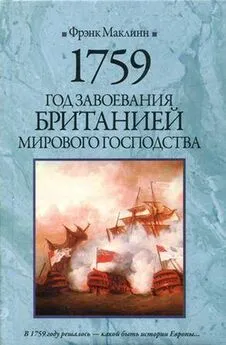
![Ксения Чепикова - Человек, научивший мир читать [История Великой информационной революции]](/books/1059757/kseniya-chepikova-chelovek-nauchivshij-mir-chitat-ist.webp)
